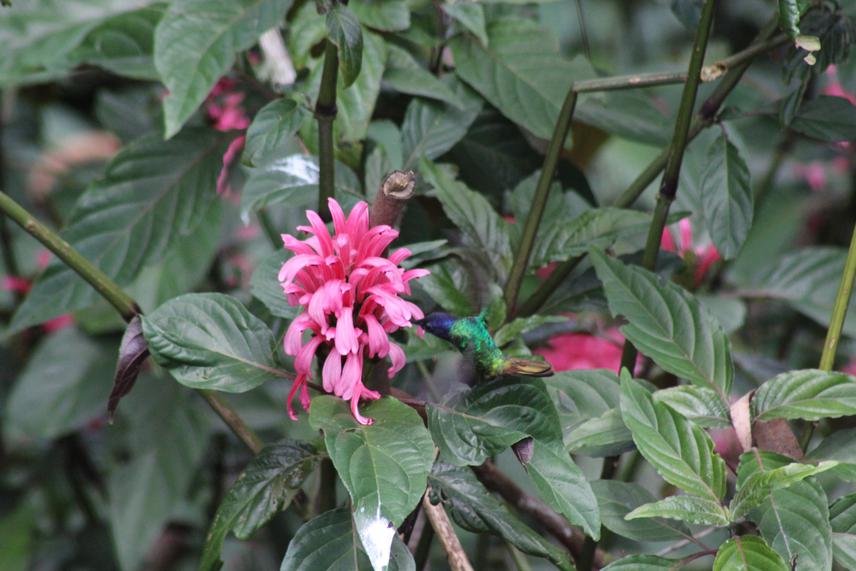Galo Alfredo Buitrón-Jurado
Other projects
This project focuses in assessing the contribution of nectarivorous and frugivorous birds to ecological processes such as pollination and seed dispersal using interaction networks.

Conservation of ecosystems and their services depends of our understanding of species interaction with the environment but also with other species. Tropical montane forests are endangered ecosystem facing several threats despite their importance for water provisioning. Thus, it is important to determine the role of plant and animal assemblages to ecological processes such as pollination and seed dispersal which contribute to their persistence and restoration. Pollination and seed dispersal can be understood as mutualistic networks which are representations of how animal and plant species are connected within ecosystems. These networks permit to determine the importance of species using the number of interacting plants (links) and interactions (frequency of visits) in a similar fashion as social networks such as facebook. These networks make possible to determine the degree of specialization, redundancy and levels of dependency of species on their food plants. Pivotal species for pollination or seed dispersal are those with the greatest number of links.
Thus, the main aim of this project is to determine the importance of nectarivorous and frugivorous birds to pollination and seed dispersal by analyzing their interaction networks and their degree of redundancy (species which accomplish similar functions) and complementarity (species specialized in different function). Ecological redundancy and complementarity are key features of ecosystem which guarantees their functioning in presence of disturbances. This project is focused to obtain detailed information on the foraging behavior of nectarivorous and frugivorous birds and their food plants in three Venezuelan montane forests. These data will permit to determine the structure of bird-plant networks (an outstanding association in these types of forests), determine the main factors which hold the interaction patterns and the contribution of particular bird species for pollination and seed dispersal. By means of diversity censuses, observations of the foraging behavior of birds and collection and identification of food plants, we are going to determine the influence of evolutive or ecological similarities on interaction patterns.
Network analyses will permit determine the level of specialization, redundancy and dependence of bird species in their food plants and their importance for ecosystem functioning and to determine their vulnerability considering the dramatic effects predicted to occur by the global climatic change, poaching and current land practices. Interactions networks provide also novel alternatives for management because they permit identifying useful native tree species to promote restoration plans which increase the populations of bird species in intact and degraded areas of montane forests.